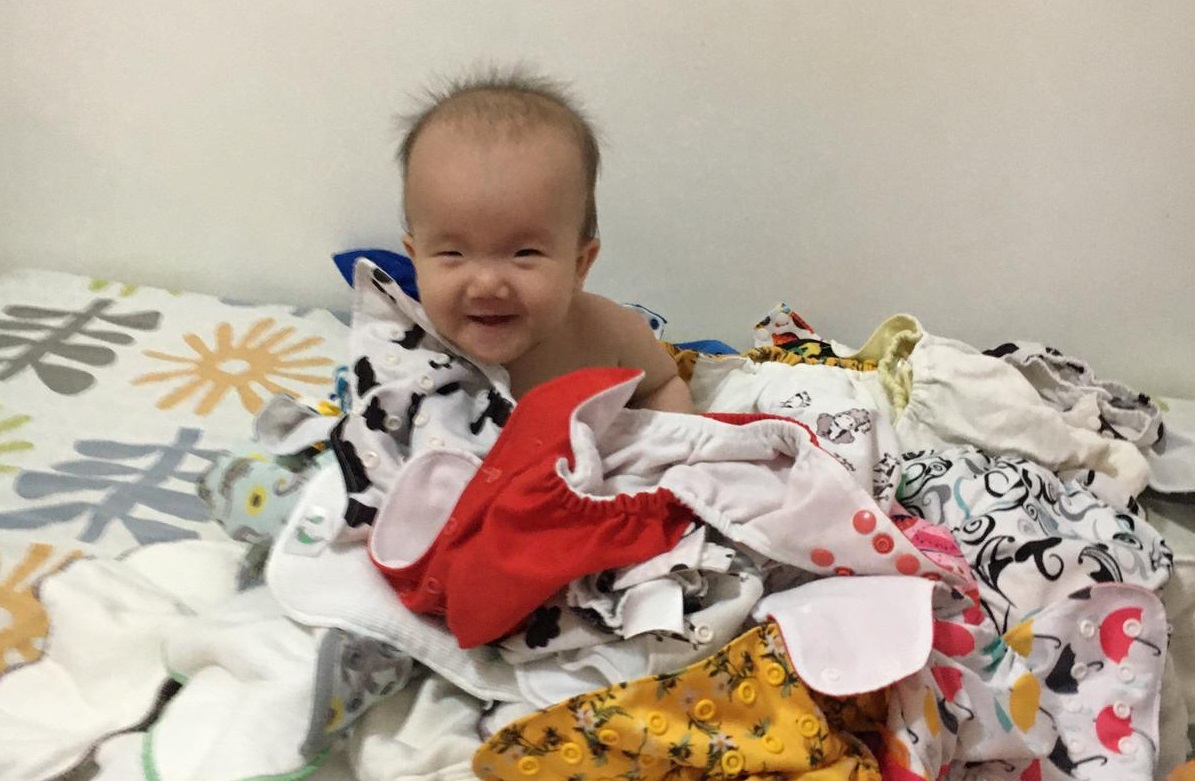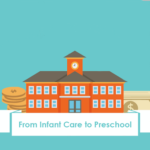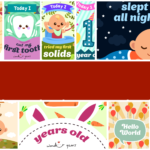Children with Congenital Heart Disease, a collective term for a wide spectrum of birth defects of the heart, are called “Heart Babies”.
In Singapore, congenital heart disease is diagnosed in 0.8% of total live births. Thankfully, with modern treatment methods, the survival rate of heart babies into adulthood has drastically improved.
It is now close to 85% as compared to 15% decades ago. Ventricular Septal Defect makes up 20% to 30% of congenital heart lesions and is among the most common congenital heart diseases.
We speak to two mums with heart babies to understand what it’s like caring for a child with heart disease.
Caring for a Child with Heart Disease
Janine’s story, as told by her mum, Wen Hsin

When Janine was a few days old, she would gasp and often choke while feeding. Her mum felt that something was not right, and they brought Janine to a paediatrician where a heart murmur was detected.
Though it was late at night, the urgency of the situation saw the paediatric cardiologist being called back to the hospital to perform an echo scan for Janine. It was then that the scan showed a small to medium-sized ventricular septal defect. She was 10 days old when diagnosed.
“I was confused and really scared when I found out. We had to handle another complicated family matter then and it is hard to describe my feelings.”, Wen Hsin recounted.
Janine has grown from a tiny newborn to a chubby toddler who meets her developmental milestones.
What special care does Janine require?
Janine’s condition is currently stable, but early on when she was tiny, her parents had to feed her diligently as she was underweight.
Recalling those times, Wen Hsin said, “She didn’t like milk and it was such a chore to have to almost force feed her. She would just take 20ml in an hour if we let her.”
Now a feisty baby who enjoys solid food and her milk, Janine is now growing well and chubby. She remains on medication twice daily and has regular heart scans with her cardiologist to monitor her condition.
Read also: Simple Activities that Teach Children About Love
Nathan’s story, as told by his mum, Amy

Nathan with his elder sister, Mya
On the day that Nathan was to be discharged from the hospital, the paediatrician on duty heard a murmur from his little heart through the stethoscope. As there happened to be a cardiologist paediatrician doing ward rounds, he was called in to listen to Nathan’s heart.
The scan revealed the hole to be large and in a tricky position.
“We were in shock when we heard the news, then we underwent denial. Why was it our son? It can’t be. It was an emotional rollercoaster,” Amy shares.
What special care does Nathan require?
When Amy brought Nathan home, she decided that she wanted to help him grow up as normally as possible.
He had to be medicated early on in his first month to prevent the build-up of water in his lungs. Due to the hole in his heart, his right lung became swollen as the flow of oxygenated blood was disrupted.
Amy recounted, “The main issue was feeding as he would get breathless very easily. He would pant as if he had a sprint, after drinking milk for a mere 5 minutes. He was a fully breastfed baby so it was hard for us to know if it was the let down causing it or his heart.”
Nathan was six months old when he turned blue, giving his family a huge shock. He ended up being hospitalised for three days due to pneumonia. Another episode of breathlessness at 13 months old turned out to be croup.
At first, Nathan had monthly follow-up sessions at the cardiologist, but as he got bigger and stronger, the gaps widened and he now sees the doctor once every quarter.
“That being said, he still failed his last heart scan. The murmur was clear as day in the ultrasound. But the ECG showed that he still might need an operation. We don’t fully understand these things ourselves, and it’s most frustrating when [the doctors] talk between themselves because we don’t understand the technical terms. They draw pictures or use a heart model to explain it to us”, Amy mentions.
Tips for Caring for a Child with Congenital Heart Disease
Caring for a child with congenital heart disease requires constant care and patience. The following tips may help in handling the situation.
1. Do your own research
Congenital heart disease is a complicated illness. Doing your own research from verified sources can enable you to get a better understanding of your child’s condition.
You can start your search by going through medical websites or research papers published by doctors who specialise in this area.
2. Find a doctor you can trust
Finding a doctor that you’re comfortable with to be in charge of your child’s case helps, as you will need to liaise with him or her regularly about your child. Their response time, the way they take extra effort to explain your child’s condition to you, or their experience and professionalism in the field could be among your deciding factors.
3. Reach out to people who are going through the same thing
Be it through the hospital or in an online community, search for a group where you can ask questions and share your experience with. Some resources for connecting with those caring for a child with heart disease include CHD Community and Club Rainbow.
4. Have a support system
Caring for a heart baby can be emotionally taxing and stressful. Trusted family members, close friends or neighbours whom you can fall back on will greatly help keep you balanced emotionally.
If you are unable to cope, seek help from a counsellor or talk to your hospital about respite care options.
Read also: A Mum’s Heartwarming Story About Adoption in Singapore
With modern technology and advancements, hospitals now have the capabilities to treat heart babies.
For Janine’s mum, faith and prayer get her through the tough times, but she also emphasises on finding a doctor who is trustworthy. “Find a doctor you can trust, do your research and try to connect with mums in the same situation.!”























